We need your consent to the use of individual data so that you can show information about your interests, among other things. Click "OK" to give your consent.
Rare Big Thanka 8 manifestacion Guru Padmasambhava with silk Embroidery-
Padmasambhava[note 1] (lit. "Lotus-Born"), also known as the Second Buddha, was a sageguru from Oddiyana, northwestern Classical India (in the modern-day Swat Valley of Khyber Pakhtunkhwa, Pakistan). Padmasambhava is said to have transmitted Vajrayana Buddhism to Tibet, Bhutan and neighboring countries in the 8th century AD. In those lands, he is better known as Guru Rinpoche (lit. "Precious Guru") or Lopon Rinpoche,[1] or as Padum in Tibet,[2] where followers of the Nyingma school regard him as the second Buddha.[3][note 2]
He is, moreover, considered to have been an emanation of Buddha Amitabha, Shakyamuni Buddha, and Kuan Yin Bodhisattva.The most definitive source on Padmasambhava's life is the Padma bKa'i Thang,[6] said to be discovered in 1346 CE by Urgyan Lingpa (1323 or 1329-ca.1360 or 1367).[7] It belongs to the gter-ma ("hidden treasures") tradition, that began in the 11th century with Sangs-rgyasbla-ma (ca. 1000-1080).[7] According to Guenther,
"From a historical point of view these "rediscovered" texts are of little relevance: there are too many discrepancies, if not to say, blatant contradictions in one and the same text or the texts ascribed to one and the same author, concerning what we know to be historical facts."[7]
Furthermore, he informs us, the Tibetan hagiographies (Namthar) on Padmasambhava were written centuries after his own lifetime and revolve around certain supernatural accomplishments he allegedly brought about,[8] adding to the factual inaccuracy of these accounts.[9]Tsultrim Allione, Tarthang Tulku and Keith Dowman explain therefore that Namthar are not to be understood as describing actual events, but function as an example of buddhahood and a guide for those on the path to enlightenment.[10]
Owing to the aforementioned problems, we only know a few things about Padmasambhava with certainty. We know that there was once a guru from Orgyen named Padmasambhava, who stayed at the court of the Tibetan king, Trisong Detsen (742-74(7) C.E.), somehow aided in the process of constructing and inaugurating the Samye monastery, journeyed across the country and then left Tibet under mysterious circumstances.[11][12]
Apart from their apparent lack of historicity however, Guenther stresses that Tibetan hagiographical texts such as the ones on Padmasambhava do reveal valuable information about the cultures of their day. He claims that:
"Written in verse form in the language as spoken by the "discoverer" at the time of their discovery, these texts reflect the Zeitgeist that demanded that everything had to be "Indian" and, therefore, as tendentious writings, they increasingly marginalize Padmasambhava's "foreign" (Urgyan, also spelled Orgy an) and even Tibetan connection."Birth
Padmasambhava was born into a Brahmin family of Northwest India.[13][14]
According to tradition, Padmasambhava was incarnated as an eight-year-old child appearing in a lotus blossom floating in Lake Dhanakosha, in the kingdom of Oḍḍiyāna in Ancient India and in modern times identified with the Swat Valley of South Asia present-day Pakistan.[15] His special nature was recognized by the childless local king of Oḍḍiyāna and was chosen to take over the kingdom, but he left Oḍḍiyāna for northern parts of India.
Tantra
In Rewalsar, known as Tso Pema in Tibetan, he secretly taught tantric teachings to princess Mandarava, the local king's daughter. The king found out and tried to burn him, but it is believed that when the smoke cleared he just sat there, still alive and in meditation. Greatly astonished by this miracle, the king offered Padmasambhava both his kingdom and Mandarava.
Padmasambhava left with Mandarava, and took to Maratika Cave in Nepal to practice secret tantric consort rituals. They had a vision of buddha Amitayus and achieved what is called the Rainbow Body of the Great Transference[note 3] in the Vajrayana tradition, a very rare type of spiritual realization. [note 4]Dzogchen Practitioners of Padmasambhava's terma still achieve this type of realization today.[citation needed] Both Padmasambhava and Mandarava are still believed to be alive and active in this Rainbow Body form by their followers. She and Padmasambhava's other main consort, Yeshe Tsogyal who was responsible for hiding his numerous terma later in Tibet became fully enlightened. Many thangkas and paintings show Padmasambhava in between them.
Guru Orgyen Dorje Chang (Wylie: gu ru U-rgyan rDo-rje ‘chang, Sanskrit: Guru Uddiyana Vajradhara) The vajra-holder (Skt. Vajradhara), shown dark blue in color in the attire of the Sambhogakaya. Depicted in union with consort.
Guru Shakya Senge (Wylie: shAkya seng-ge, Skrt: Guru Śākyasimha) of Bodh Gaya, Lion of the Sakyas, who learns the Tantric practices of the eight Vidyadharas. He is shown as a fully ordained Buddhist monk.
Guru Pema Gyalpo (Wylie: gu ru pad ma rgyal-po, Skrt: Guru Padmarāja) of Uddiyana, the Lotus Prince, king of the Tripitaka (the Three Collections of Scripture). He is shown looking like a young crowned prince or king. )
Guru Pema Jungne (Wylie: pad ma ‘byung-gnas, Skrt: Guru Padmakara) Lotus-arisen, the Saviour who teaches the Dharma to the people. He is shown sitting on a lotus, dressed in the three robes of a monk, under which he wears a blue shirt, pants and heavy Tibetan boots, as protection against the cold. He holds the diamond-scepter of compassionate love in his right hand and the yogi's skull-bowl of clear wisdom in his left. He has a special trident called khatvanga of a wandering Yogi, and wears on his head a Nepalese cloth crown, stylistically designed to remind one of the shape of a lotus flower. Thus he is represented as he must have appeared in Tibet. Guru Loden Chokse (Wylie: gu ru blo ldan mchog sred; Skrt: Guru Mativat Vararuci[) of Kashmir, the Intelligent Youth, the one who gathers the knowledge of all worlds. He is shown in princely clothes, beating a hand-drum and holding a skull-bowl.
Guru Nyima Ozer (Wylie: gu ru nyi-ma ‘od-zer, Skrt: Guru Suryabhasa or Sūryaraśmi[29]), the Sunray Yogi, who illuminates the darkness of the mind through the insight of Dzogchen. He is shown as a naked yogi dressed only in a loin-cloth and holding a Khatvanga which points towards the sun.
Guru Dorje Drolo, (Wylie: gu ru rDo-rje gro-lod, Skrt: Guru Vajra ?) the fierce manifestation of Vajrakilaya (wrathful Vajrasattva) known as "Diamond Guts", the comforter of all, imprinting the elements with Wisdom-Treasure.
Guru Senge Dradog (Wylie: gu ru seng-ge sgra-sgrogs, Skrt: Guru Simhanād of Nalanda University, the Lion of Debate, promulgator of the Dharma throughout the six realms of sentient beings. He is shown in a very fierce form, dark blue and imitative of the powerful Bodhisattva Vajrapani, holding a thunderbolt scepter in one hand and a scorpion in the other.
Padmasambhava's various Sanskrit names are preserved in mantras such as those found in the Yang gsang rig 'dzin youngs rdzogs kyi blama guru mtshan brgyad bye brag du sgrub pa ye shes bdud rtsi'i sbrang char zhe bya ba
Size 140 x 100 cm
| Product code | 358 |
|---|---|
| Warranty | 2 years |

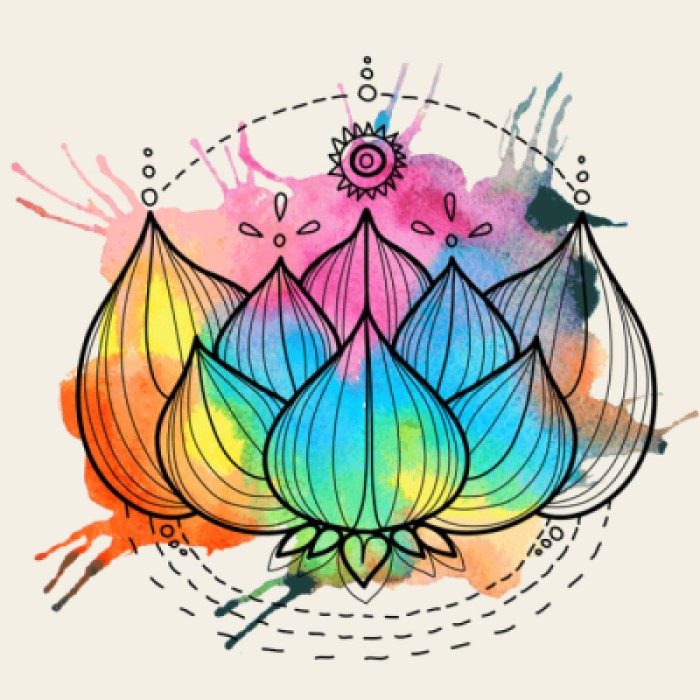


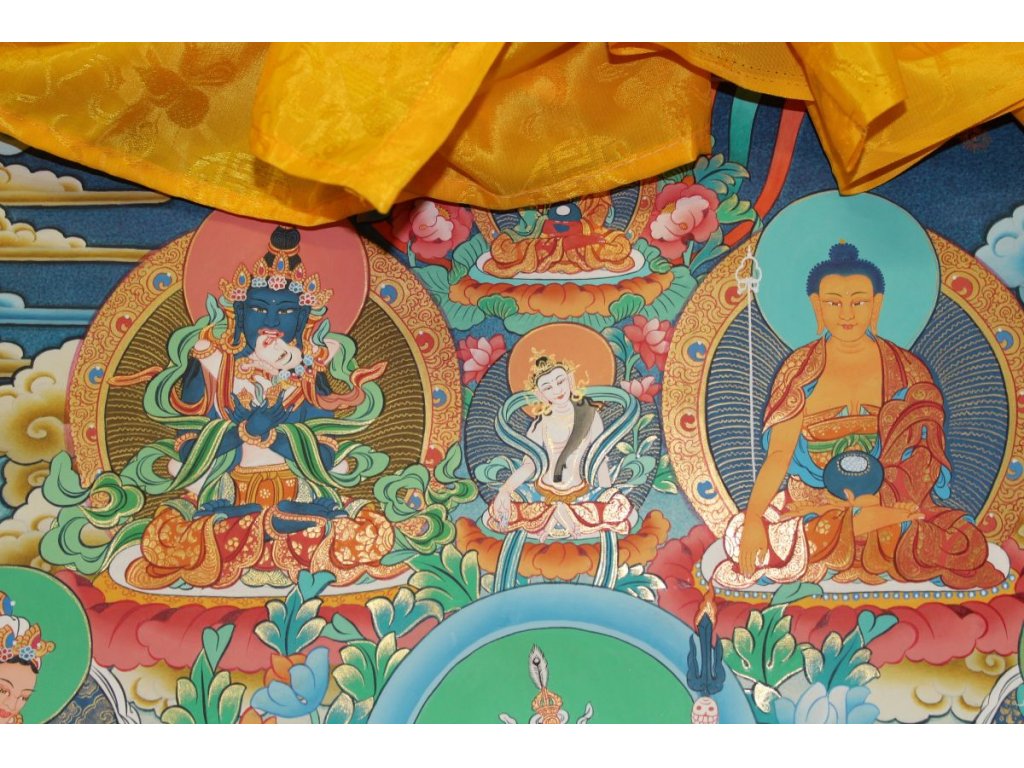
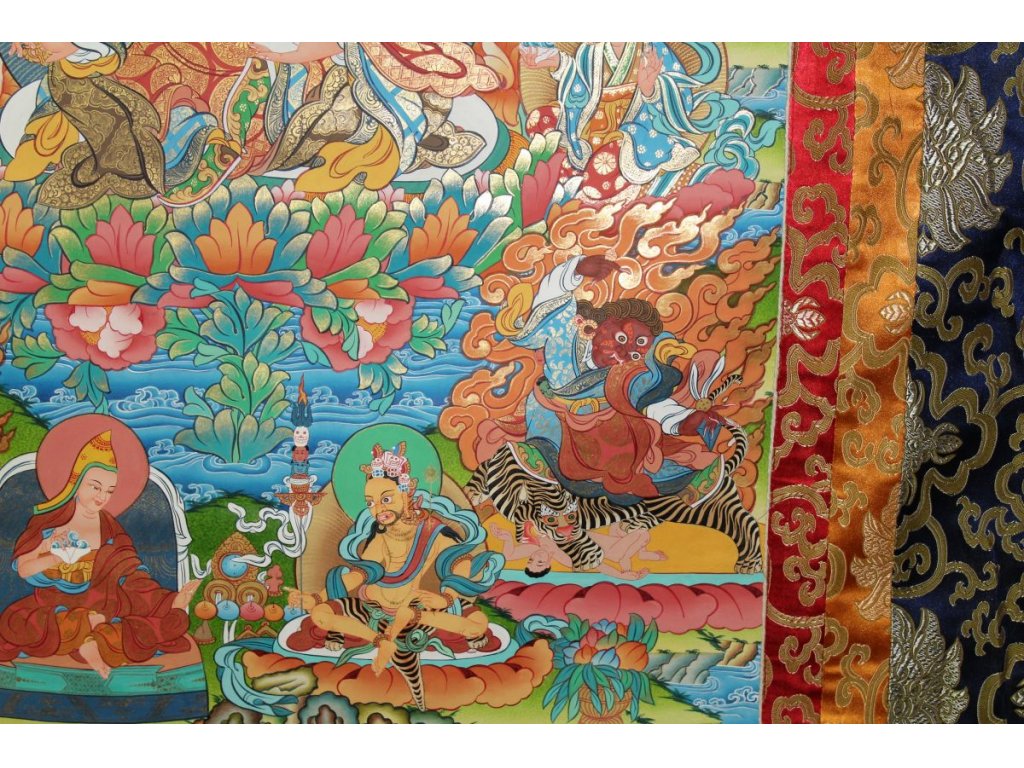
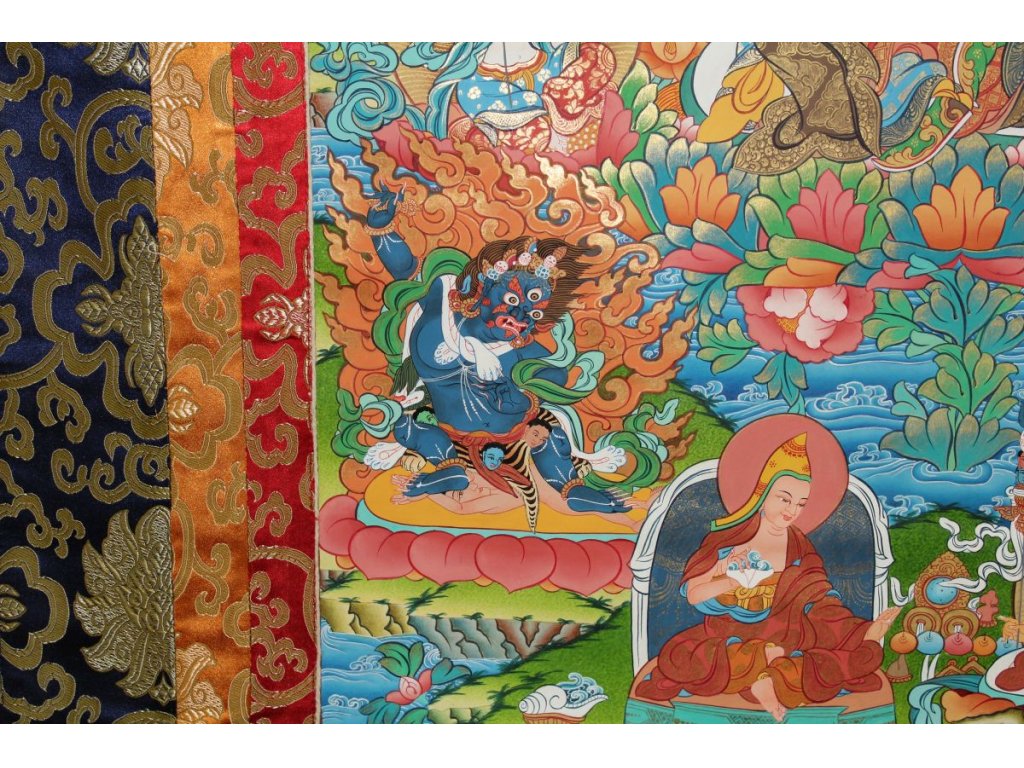

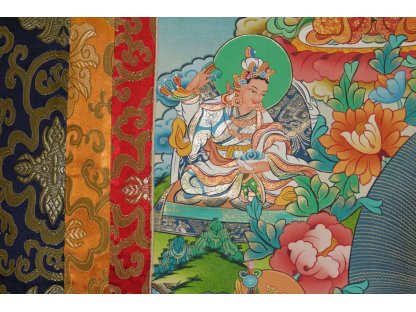




 Cookie - Settings
Cookie - Settings
